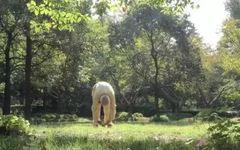This official account is the WeChat of the National Administration of Traditional Chinese Medicine. If you have not followed yet, please click the blue “Chinese Medicine” above to follow.
Content compiled from the China Traditional Chinese Medicine News, the official account of the China Traditional Chinese Medicine News, and the WeChat of Fujian University of Traditional Chinese Medicine.
Editor’s Note:
The guiding method can fully utilize one’s own initiative, allowing individuals to achieve a healthy physique through their own strength, which is an advantage that other treatment methods cannot compare to. Today, let’s learn the “Twelve Movements of the Ancient Yi Jin Jing”!
Preparation Movement Guiding Method
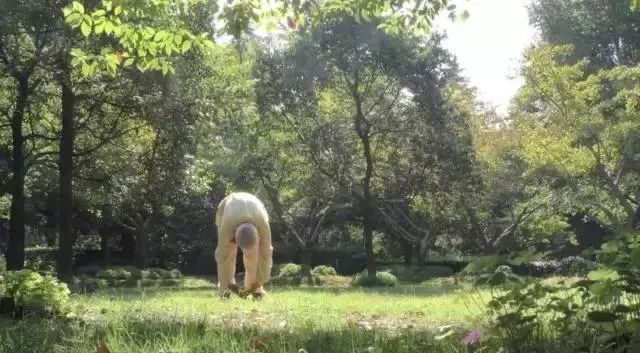
The Preparation Movement guiding method smooths the Ren (Ren Mai) and Du (Du Mai) meridians. The Du Mai governs the Yang of the body, guiding the Du Mai to elevate Yang Qi; the Ren Mai governs the Yin of the body, guiding the Ren Mai to lower Yin Qi.
The Preparation Movement guiding method, through curling and stretching, allows the tendons to return to their slots and the bones to align, enabling practitioners to achieve proper posture, harmonious Qi, and flexibility. Additionally, the Preparation Movement can promote the circulation of Qi and blood throughout the body, reaching the extremities (fingers and toes) to warm up and invigorate the blood. Therefore, the Preparation Movement is also known as the warming-up method.
First Movement: Wei Tuo Presents the Pestle
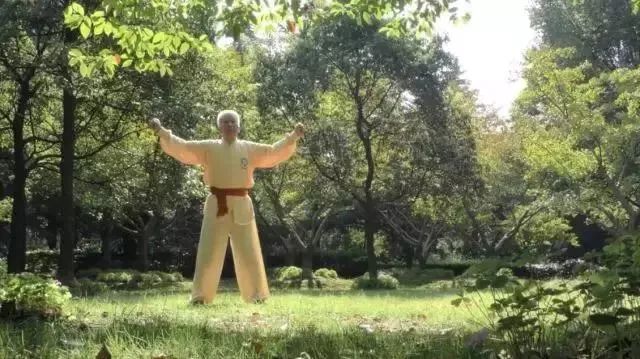
The first movement of Wei Tuo Presents the Pestle smooths the Hand Taiyin meridian, which corresponds to the Hand Taiyin Lung Meridian. TCM guiding techniques place great importance on the regulation of the Lung Meridian. The lungs connect to all meridians, governing Qi and regulating the body. Guiding this movement can alleviate fullness in the chest, shortness of breath, anxiety in the chest, numbness and soreness in the shoulders and upper limbs, inability to exert strength with both hands, tightness and pain, and discomfort in the ribs.
Second Movement: Wei Tuo Presents the Pestle
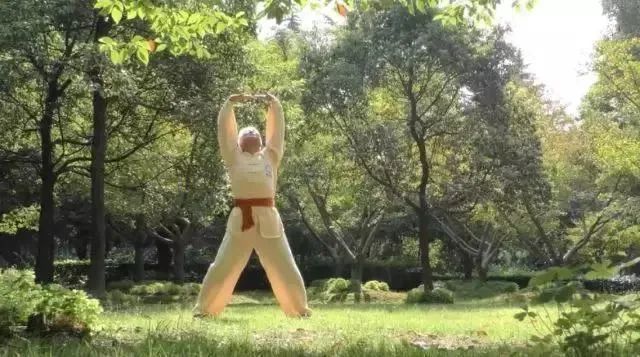
The second movement of Wei Tuo Presents the Pestle smooths the Hand Shaoyang meridian, which corresponds to the Hand Shaoyang Sanjiao Meridian. Regularly practicing this movement can timely eliminate fatigue, enhance the Qi transformation functions of the upper, middle, and lower Jiao, disperse accumulations in the organs, and prevent diseases before they occur.
Star Plucking and Dipper Changing Movement
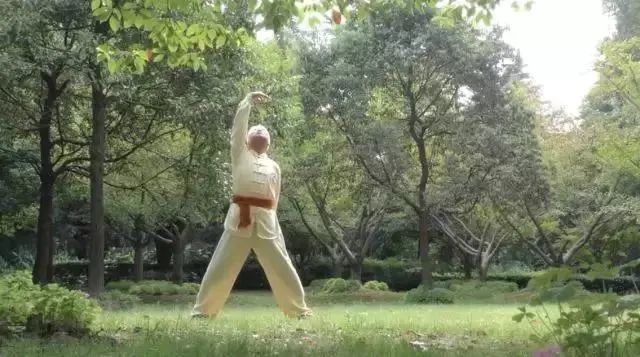
The Star Plucking and Dipper Changing Movement smooths the Hand Shaoyin meridian, which corresponds to the Hand Shaoyin Heart Meridian. TCM believes that the heart governs the spirit. If the heart is not nourished, it can lead to restlessness, palpitations, and insomnia. A scattered spirit can disrupt focus. Therefore, guiding this movement has the effect of enhancing concentration.
Claw Extension and Wing Display Movement
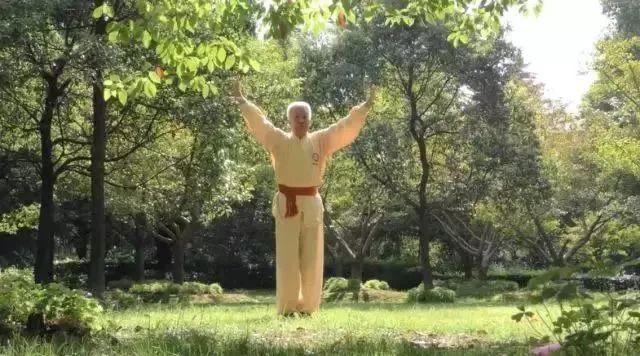
The Claw Extension and Wing Display Movement smooths the Hand Yangming meridian, which corresponds to the Hand Yangming Large Intestine Meridian. The Large Intestine Meridian and the Lung Meridian are interrelated. This movement mimics the form of birds. The guiding method of Claw Extension and Wing Display, through clenching teeth, pressing the tongue, raising the head, puffing the chest, drawing in the abdomen, and lifting the anus, assists the rise of Yang Qi, concentrates energy, and enhances focus. Long-term practice can make one feel light as a swallow. Guiding this movement can regulate symptoms such as dry mouth, nasal congestion, toothache, abdominal pain, diarrhea, and constipation.
Pulling the Nine Cattle’s Tail Movement
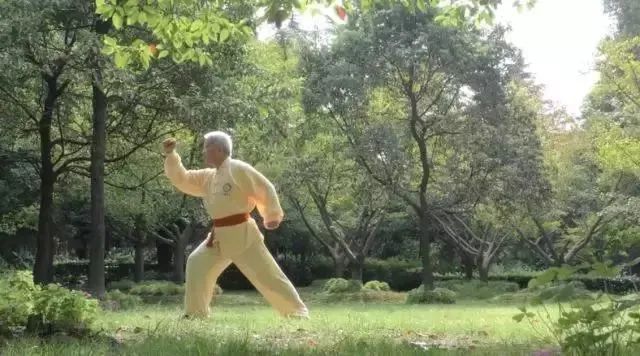
The Pulling the Nine Cattle’s Tail Movement smooths the Foot Yangming meridian, which corresponds to the Foot Yangming Stomach Meridian. The Twelve Movements of the Yi Jin Jing utilize strength, not force; strength comes from the tendons. Regularly practicing this guiding movement can eliminate the physiological phenomenon of having Qi without strength, while also enhancing stomach function and preventing gastrointestinal diseases.
Nine Ghosts Pulling the Horse Knife Movement
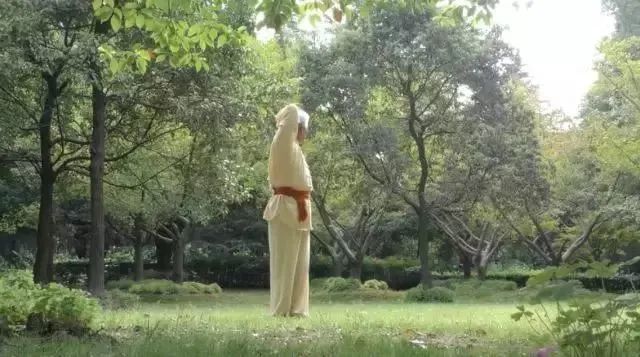
The Nine Ghosts Pulling the Horse Knife Movement smooths the Foot Shaoyang meridian, which corresponds to the Foot Taiyang Bladder Meridian. Guiding this movement can alleviate pain in the little toe, swelling and pain in the heel, stiffness in the neck, and inability to raise the arms, providing regulatory effects. It also helps with weak Qi transformation functions in the lower Jiao, as well as stiffness in the lower limb joints, pain in the ribs, and pain in the thoracic and cervical vertebrae.
Three Plates Landing Movement
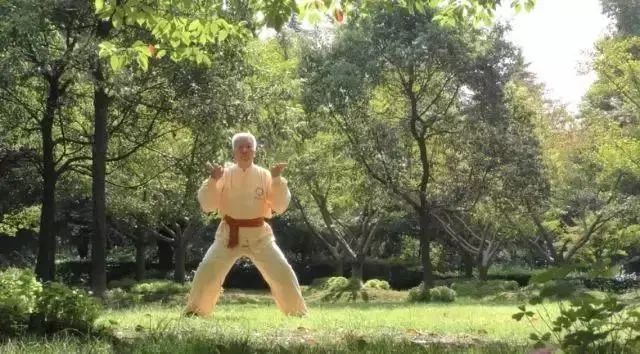
The Three Plates Landing Movement smooths the Hand Jueyin meridian, which corresponds to the Hand Jueyin Pericardium Meridian. The Pericardium and the Sanjiao are interrelated. Although these two meridians have names, they do not have actual forms, but they do have their functions. The guiding method of the Three Plates Landing Movement consists of eight small guiding movements: starting position, downward insertion, forward push, inward gathering, wrist rotation, fist clenching, lifting, and concluding. Its main function is to exercise tendon strength and enhance immunity. Regularly guiding this movement can alleviate chest tightness and distension, providing protective effects for the heart and the entire chest and abdomen.
Green Dragon Extending Claw Movement
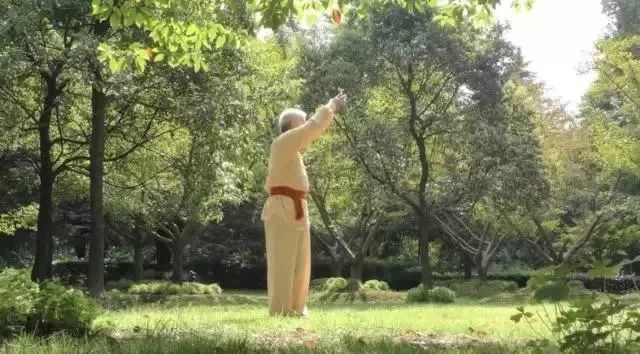
The Green Dragon Extending Claw Movement smooths the Foot Taiyang meridian, which corresponds to the Foot Shaoyang Gallbladder Meridian. This movement mimics the “dragon extending its claw” guiding method, requiring smooth and gentle actions. The hands should slowly guide from the head down, pulling the shoulder blades down vertically to the outer side of the ankle, then rotating the body 180 degrees and pulling upward. Guiding this movement can alleviate tightness in the waist, legs, shoulders, and neck, and is beneficial for the circulation of Qi and blood throughout the body. TCM believes that the liver and gallbladder are interrelated. Guiding this movement has the effect of soothing the liver and draining the gallbladder. Combining it with the Tiger Lying Down to Pounce Movement yields even better results. Long-term adherence to this movement can help regulate symptoms of anxiety and depression.
Tiger Lying Down to Pounce Movement
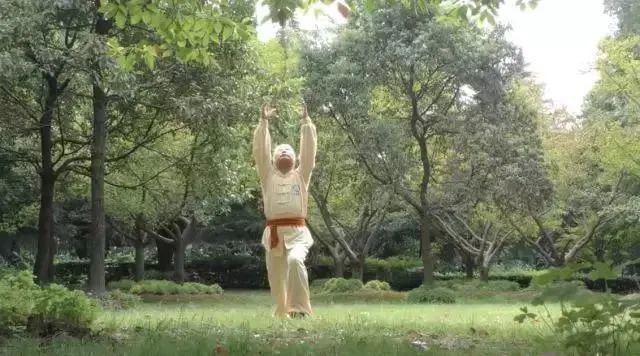
The Tiger Lying Down to Pounce Movement smooths the Foot Jueyin meridian, which corresponds to the Foot Jueyin Liver Meridian. TCM believes that the liver governs the tendons, and the largest tendon in the human body is the Zong tendon (reproductive organ). The “Suwen: Discussion on Atrophy” states: “Excessive sexual activity can lead to the Zong tendon being overstretched.” Regularly guiding the Tiger Lying Down to Pounce Movement can help regulate excessive sexual activity and improve sexual function.
Bow Down Movement
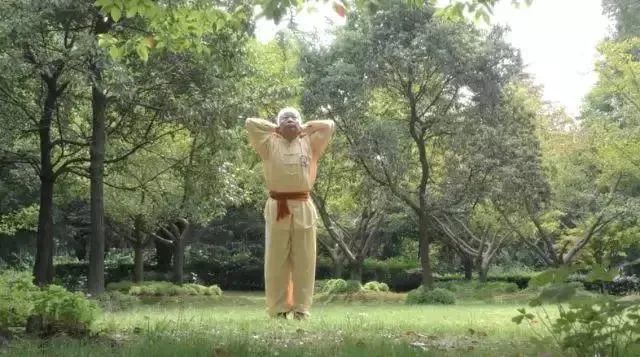
The Bow Down Movement smooths the Foot Shaoyin meridian, which corresponds to the Foot Shaoyin Kidney Meridian. The Kidney Meridian and the Bladder Meridian are interrelated. TCM believes that the kidneys open to the ears. During the guiding of this movement, both hands should cover the ears tightly to “close” them, and then bow down. When rising, gradually relax to “open” them. Regularly guiding this movement can strengthen the kidneys, bolster the waist, prevent tinnitus, and enhance hearing.
Tail Dropping Movement
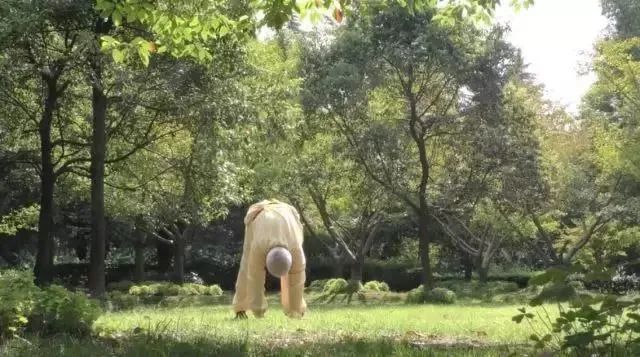
The Tail Dropping Movement smooths the Hand Taiyang meridian, which corresponds to the Hand Taiyang Small Intestine Meridian. The Small Intestine Meridian and the Heart Meridian are interrelated. The Tail Dropping Movement, also known as the Work Tail Movement, involves swinging. The guiding method of the Tail Dropping Movement, through crossing the hands and hanging from the tailbone to the cervical vertebrae, facilitates the upward movement of Qi and blood along the Du Mai. The heel striking the ground accelerates this upward process. Long-term adherence to this movement can help regulate symptoms such as ear pain, cervical vertebrae pain, shoulder joint soreness, lower abdominal distension, frequent urination, and constipation.
Concluding Movement
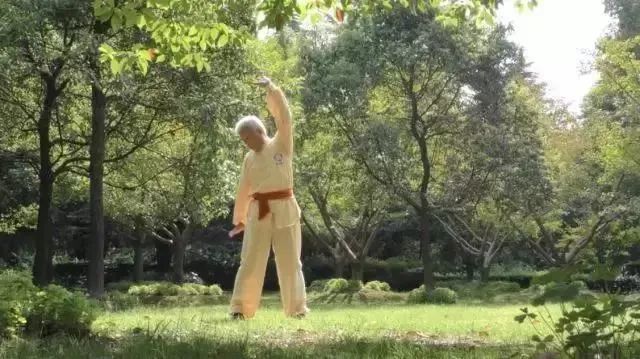
The Concluding Movement smooths the Foot Taiyin meridian, which corresponds to the Foot Taiyin Spleen Meridian. This guiding movement can be performed before and after meals, and regularly practicing unilateral lifting can awaken the spleen and nourish the stomach, preventing diseases related to the spleen and stomach.
The Yi Jin Jing is an ancient method of fitness and health preservation that has been passed down in China, having a significant influence on the development of traditional practices in our country, and has been widely popular among the masses for thousands of years. In addition to the real-person video version introduced above, there is also a cute Q-version of the Yi Jin Jing. Let’s learn together!
Q-Version Yi Jin Jing
1
Embracing Hands
●
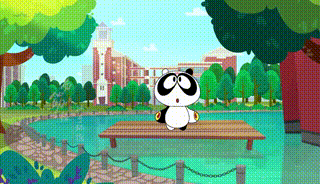
2
Two Arms Horizontal Support
●
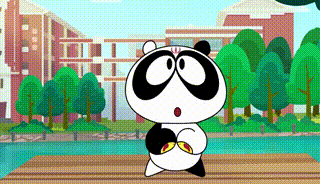
3
Palms Supporting the Heavenly Gate
●
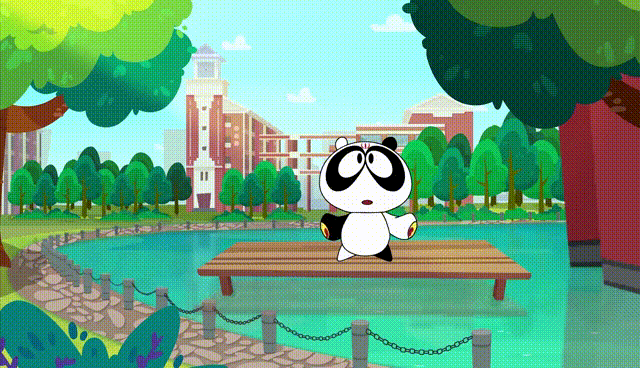
4
Star Plucking and Dipper Changing
●
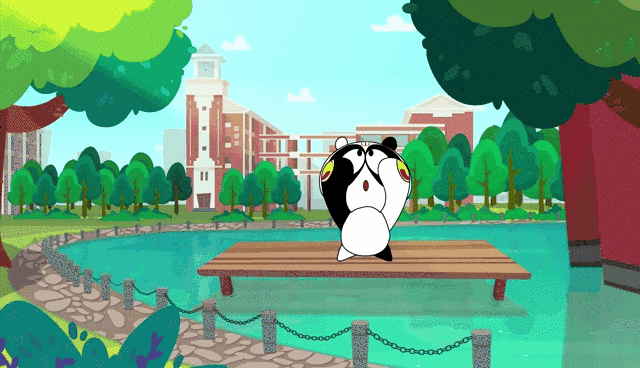
5
Claw Extension and Wing Display
●
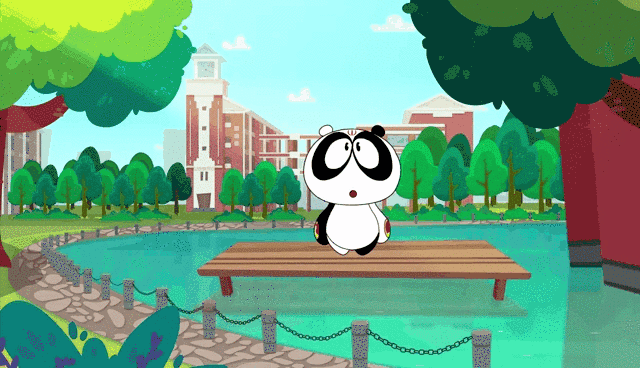
6
Pulling the Nine Cattle’s Tail
●
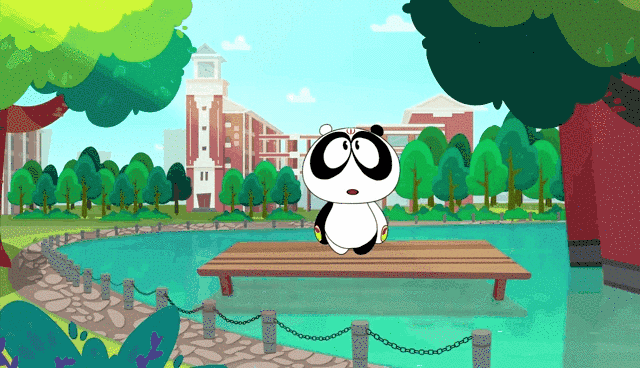
7
Nine Ghosts Pulling the Horse Knife
●
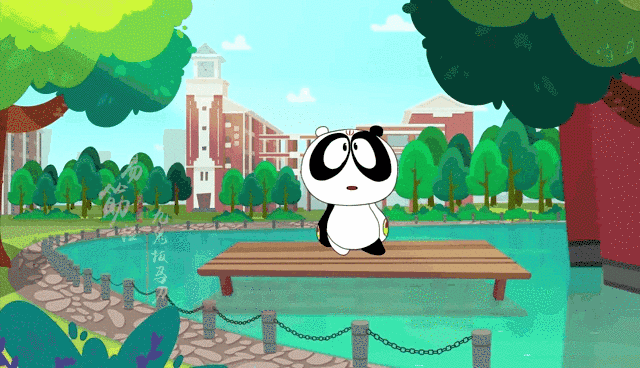
8
Three Plates Landing
●
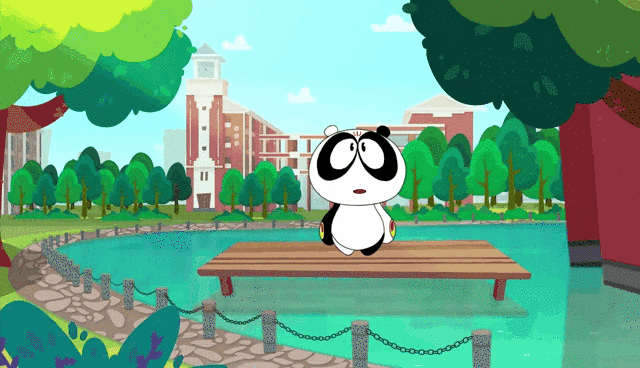
9
Green Dragon Extending Claw
●
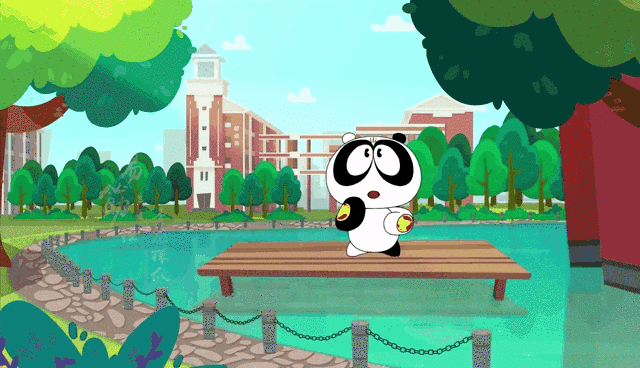
10
Tiger Lying Down to Pounce
●
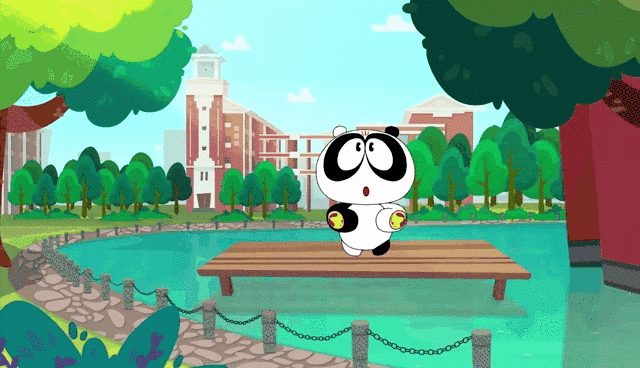
11
Bow Down Movement
●
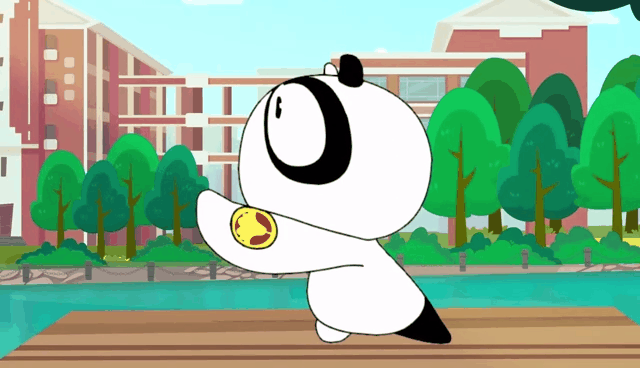
12
Tail Dropping Movement
●
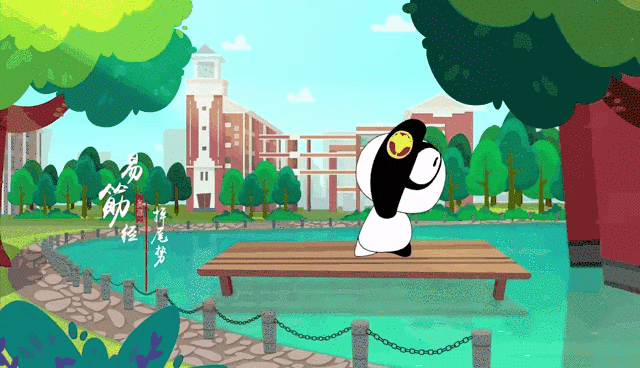
Editor: Dong Jun Tong
China Traditional Chinese Medicine
WeChat ID: satcm01


